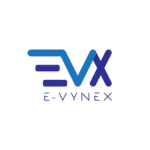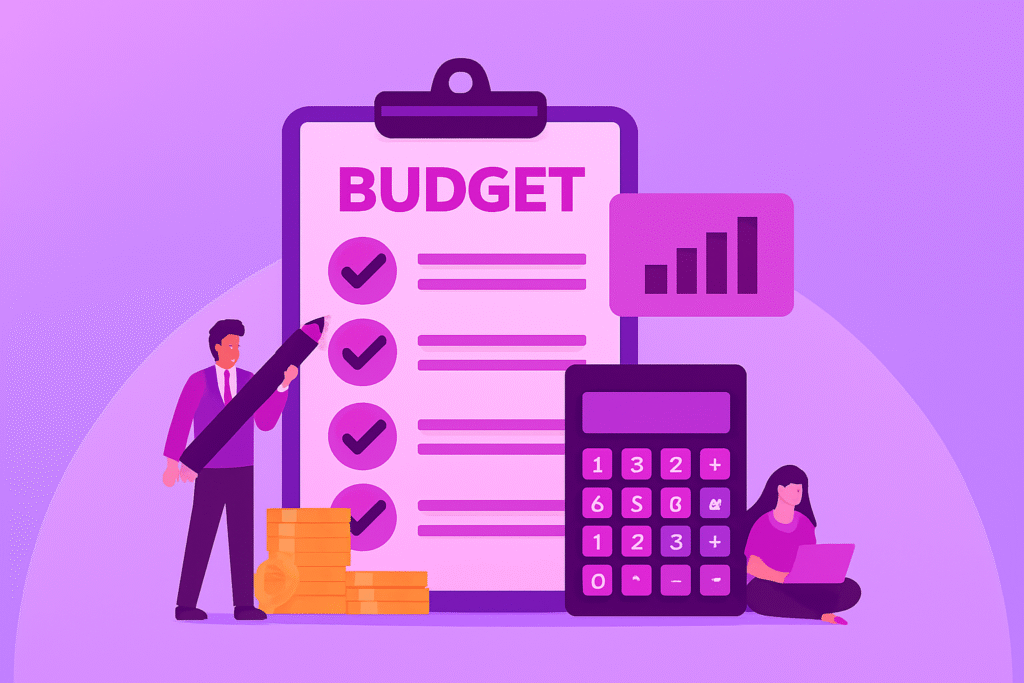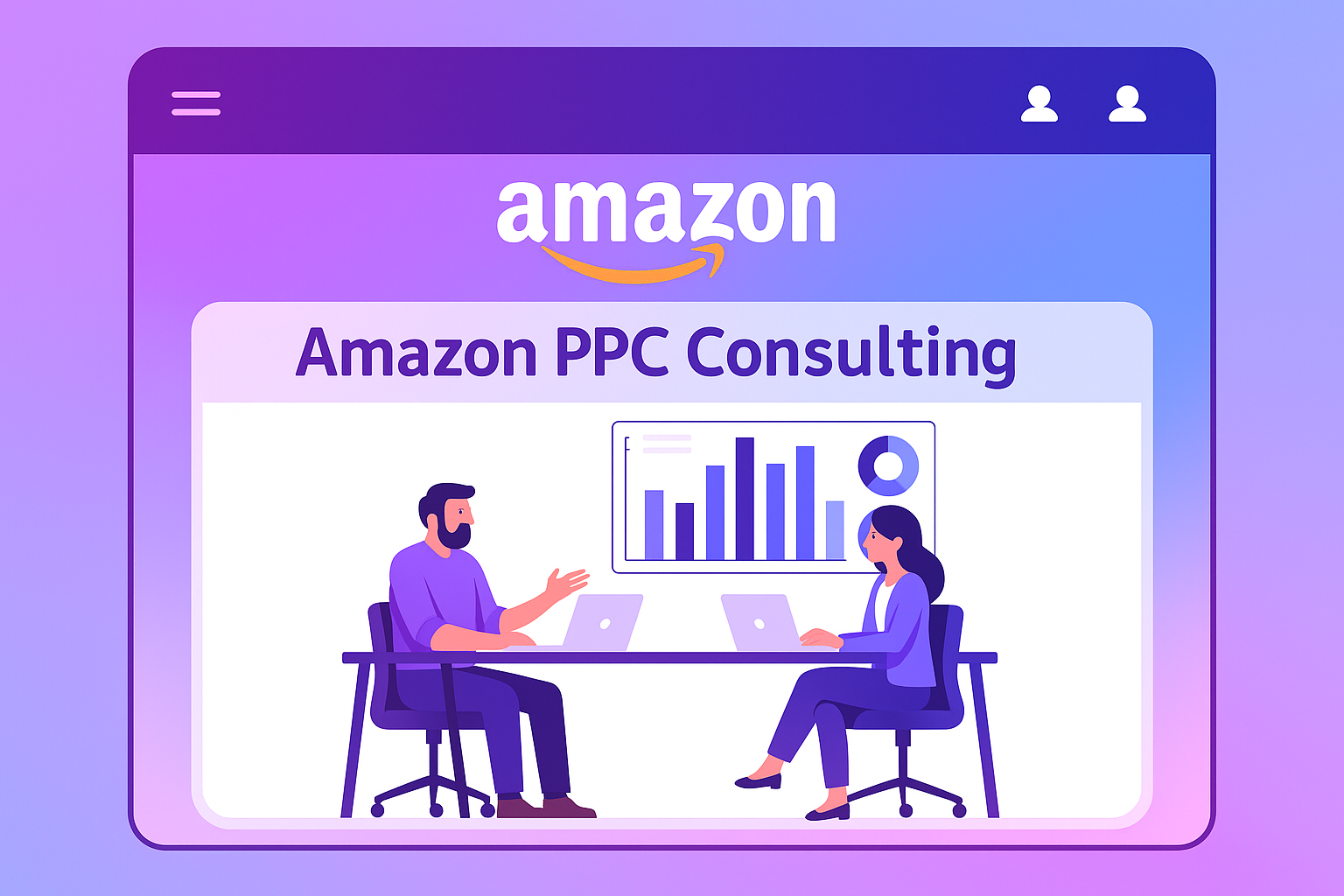
Table of Contents
ToggleStart your store today
You must have your amazon, ebay, tiktokshop or newegg sellercentral. If you don’t have that, you must have your personal details, passport, LLC or LTD documents. For further information you can schedule a meeting with us here.
Efficient Amazon PPC Advertising: A Guide to Smarter Budgeting
- Rizwan
- July 8 2025
![Chatgpt image jul 11, 2025, 11 08 21 am[1]](https://evynex.com/wp-content/uploads/2025/07/ChatGPT-Image-Jul-11-2025-11_08_21-AM1-1024x683.png)
Amazon PPC (Pay-Per-Click) advertising is a powerful tool for increasing visibility, driving traffic, and boosting sales. However, you may be unintentionally overspending or targeting the wrong audience without proper planning and budget control. Poorly managed PPC campaigns can quickly drain your ad budget with little return, hurting your profitability and growth.

Understanding Amazon PPC Budgeting
Amazon PPC campaigns function on a bidding system, where advertisers set either a daily or lifetime budget for their ads. Your actual spending depends on the cost-per-click (CPC)—you’re only charged when a user clicks on your ad. This makes PPC a performance-based model, but without proper budget management, costs can spiral quickly. Efficient budgeting ensures your ads stay competitive in the auction while minimizing wasted spend and maximizing your return on investment.
Start with a Realistic Budget
When launching your PPC campaigns, start with a budget that aligns with your business goals, profit margins, and product competitiveness. It’s important to strike a balance between visibility and cost-efficiency. Here’s a general guideline:
- Low-competition products: $10–$30 per day
- Moderate-competition products: $30–$50 per day
- High-competition products: $50+ per day
Start small, monitor performance metrics (like ACoS, CTR, and conversions), and scale your budget gradually based on what works. The key is to spend wisely—not excessively.
Allocate Budget by Campaign Type
Amazon offers several PPC ad formats, each serving a unique purpose:
- Sponsored Products – Ideal for driving direct product sales; best for high-converting traffic.
- Sponsored Brands – Great for increasing brand visibility and showcasing multiple products.
- Sponsored Display – Effective for retargeting and cross-selling to shoppers who’ve shown interest.
To get the best results, distribute your budget strategically based on your campaign goals. Since Sponsored Products typically deliver the highest conversion rates, it’s wise to allocate a larger portion of your budget to them—especially when you're focused on sales growth.
Optimize Keyword Bidding
Your bid amount plays a crucial role in how frequently and where your ads appear on Amazon. To maximize visibility and cost efficiency, use a mix of smart bidding tactics:
- Automatic Campaigns – Start with automatic targeting to let Amazon test and find relevant keywords. Use the data to identify what converts.
- Manual Campaigns – Use insights from auto campaigns to bid on high-performing keywords for more control and better performance.
- Adjust Bids by Placement – Boost bids for top-of-search placements if they deliver stronger conversions or lower ACoS.
- Up and Down – Increases or decreases bids based on the likelihood of conversion.
Fine-tuning your bidding strategy ensures your ads show up in the right place at the right cost, improving both performance and profitability.
Implement Negative Keywords
Negative keywords are essential for improving ad efficiency by preventing your ads from showing for irrelevant or low-intent searches. For example, if you sell premium leather wallets, you might add keywords like “cheap” or “budget” as negatives to avoid clicks from bargain hunters who are unlikely to convert.
To maximize your return on ad spend (ROAS), regularly analyze your search term reports and update your negative keyword list. This helps eliminate non-converting traffic, saving your budget for high-quality clicks that are more likely to lead to sales.
Monitor ACOS and ROAS
To measure and improve the efficiency of your Amazon PPC campaigns, focus on two essential metrics:
- ACoS (Advertising Cost of Sales) Formula:(Ad Spend ÷ Sales) × 100 A lower ACoS means you’re spending less on ads for each dollar of sales—ideal for maximizing profitability.
- ROAS (Return on Ad Spend) Formula: Sales ÷ Ad Spend A higher ROAS shows that your ads are generating more revenue per dollar spent—an indicator of strong ad performance.
Set your target ACoS based on your product’s profit margins, then adjust your bids, keywords, and targeting to stay within that goal. Keeping a close eye on these metrics helps you scale campaigns that perform well and cut those that don’t.
Adjust Budget Based on Performance
Consistent performance tracking is essential to ensure your Amazon PPC budget is being used effectively. Here’s how to optimize based on results:
- Increase budgets for campaigns with high ROAS and strong conversion rates.
- Reduce or pause spend on underperforming ads that aren’t delivering results.
- Reallocate budget toward top-performing keywords, ad groups, and high-converting placements
- Leverage Amazon’s Budget Rules to automatically increase daily budgets during peak performance periods or sales events.
By actively monitoring and refining your campaigns, you ensure that your budget is focused on the strategies that actually drive results.
Dayparting (Ad Scheduling)
While Amazon PPC doesn’t offer built-in ad scheduling, you can still control when your ads perform best by adjusting your bids manually. Use your campaign performance data to identify peak shopping hours or days, then:
- Increase bids during high-conversion times to capture more sales.
- Lower bids during off-hours to avoid wasting spend.
- Monitor trends regularly and adjust your bidding windows accordingly.
By actively monitoring and refining your campaigns, you ensure that your budget is focused on the strategies that actually drive results.
Use Portfolio Budgeting
Amazon lets you group related campaigns into portfolios, where you can set an overall budget cap. This feature helps you:
- Maintain better control over total ad spend across multiple campaigns
- Avoid overspending in any single area or product line
- Organize campaigns by product category, brand, or strategy for easier management
Portfolios are especially useful for sellers managing multiple SKUs or advertising strategies, offering a top-down view of performance and spend.
Utilize Third-Party PPC Tools
For more advanced control and efficiency, consider using Amazon PPC automation tools that streamline campaign management and budget optimization. Popular options include:
- Helium 10 ADS – AI-driven automation, keyword tracking, and smart suggestions
- Pacvue – Enterprise-level automation with competitive insights and rule-based bidding
- Perpetua – Automated bid optimization with clear performance dashboards
- Sellics – All-in-one PPC and analytics platform with real-time campaign data
These tools help you make data-driven decisions, automate repetitive tasks, and scale your Amazon ads with precision—saving time while maximizing results.
Scaling Your PPC Budget Over Time
Once your campaigns are optimized and you’ve identified high-performing keywords, it’s time to scale—carefully and profitably. Here’s how:
- Reinvest Profits – Allocate a percentage of your revenue back into campaigns that are delivering strong results.
- Increase Bids Strategically – Gradually raise bids on keywords with consistent conversions and low ACoS.
- Expand to New Keywords – Use Amazon’s Search Term Report to uncover additional high-potential keywords worth targeting.
Scaling should be a controlled and gradual process. Monitor key metrics closely to maintain profitability, and avoid sudden budget spikes that could lead to overspending.
Seasonal Budget Adjustments
Certain times of the year—like Q4, Prime Day, Black Friday, and Cyber Monday—bring higher traffic and fierce competition. To stay ahead and maximize returns, you need to strategically adjust your PPC budgets. Here’s how:
- Increase Budgets Pre-Event Begin raising bids and budgets 2–3 weeks before major sales events to build momentum and capture early demand.
- Monitor Competitor Activity Track how your competitors are bidding during peak times, and adjust accordingly to stay competitive.
- Post-Event Optimization Once the sales surge ends, lower bids and reduce budgets to avoid unnecessary spend and return to normal efficiency.
Being proactive with seasonal budgeting ensures you capture opportunities while keeping your costs under control.
Controlling Ad Spend with Placement Adjustments
Amazon allows you to fine-tune your bids based on where your ads appear, helping you allocate budget more effectively across placements:
- Top of Search (First Page) – Typically delivers the highest conversion rates and visibility. Ideal for high-performing keywords.
- Product Pages – Great for cross-selling and retargeting shoppers browsing similar items.
- Rest of Search – Usually lower-converting, but can still provide cost-effective traffic with lower CPC.
Use performance data to increase bids where you're seeing strong returns, and reduce spend on underperforming placements. This targeted bidding approach helps you maximize ROI and control costs more precisely.
Running A/B Tests for Budget Optimization
A/B testing is a powerful way to identify what works best in your Amazon PPC campaigns—ensuring your budget is spent where it delivers the greatest return. Here are key areas to test:
- Ad Creatives & Headlines – Test different visuals and messaging in Sponsored Brands to see which versions drive more engagement.
- Keyword Match Types – Compare Broad, Phrase, and Exact match keywords to find the right balance between reach and relevance.
- Bid Strategies & CPC Limits – Adjust bids and cost-per-click caps to discover the most cost-effective bidding approach.
Consistently running A/B tests helps you make data-driven decisions, improve campaign performance, and ensure every advertising dollar is working efficiently. Consistently running A/B tests helps you make data-driven decisions, improve campaign performance, and ensure every advertising dollar is working efficiently.
The Role of Organic Rankings in PPC Budgeting
Your organic search rankings on Amazon have a direct impact on how much you need to spend on PPC. Products that rank higher organically often require less paid support, helping you lower your ad spend while maintaining strong visibility.
- Optimized Product Listings – Use high-quality images, keyword-rich bullet points, and compelling descriptions to improve relevance and conversions.
- Consistent Review Generation – Encourage customer reviews and maintain high ratings, which boost credibility and help with organic placement.
- External Traffic Strategies – Drive traffic from social media, influencers, and email marketing to increase sales velocity—an important factor in Amazon’s ranking algorithm.
As your listings gain traction and climb in organic rankings, you can begin to scale back on PPC spend and reinvest that budget into launching or promoting other products.
Understanding TACoS for Long-Term Budget Strategy
Total Advertising Cost of Sales (TACoS) is a key metric that shows how your Amazon PPC spend contributes to your entire revenue, not just ad-driven sales.
- Formula: TACoS = (Ad Spend ÷ Total Revenue) × 100
- Lower TACoS suggests your organic sales are growing in relation to your ad spend—meaning your brand is becoming more self-sustaining.
- Higher TACoS can signal over-reliance on paid ads, which may hurt long-term profitability.
Your goal should be to reduce TACoS over time by maintaining efficient PPC performance while building up organic rankings and repeat customers.
Common Amazon PPC Budgeting Mistakes
Even seasoned sellers can fall into costly traps when managing their PPC budgets. Avoid these frequent mistakes to ensure your ad spend is efficient and profitable:
- Setting and Forgetting Campaigns PPC is not “set-it-and-forget-it.” Regularly monitor and optimize your campaigns to stay competitive.
- Ignoring Long-Tail Keywords Long-tail keywords often come with lower CPCs and higher conversion rates, making them valuable for budget-conscious campaigns.
- Not Using Negative Keywords Without negative keywords, your ads may show for irrelevant searches—leading to wasted spend and poor ROI.
- Overspending on Low-Converting Keywords Review performance reports frequently to pause or reduce bids on keywords that fail to convert.
By staying proactive and data-driven, you can avoid these mistakes and make the most of your Amazon PPC budget.
Amazon’s Budget Reports for Data-Driven Decisions
Amazon provides powerful reporting tools that give you valuable insights into your ad spend efficiency. Regularly reviewing these reports can help you fine-tune your strategy and get more out of your PPC budget:
- Search Term Report See which search terms are driving the most sales, helping you focus budget on high-converting keywords.
- Placement Report Analyze where your ads perform best (e.g., top of search, product pages) so you can optimize bids by placement.
- Performance Over Time Report Monitor trends in spend, impressions, clicks, and conversions to understand how your campaigns evolve over time.
Use these insights to refine your bidding strategy, identify opportunities, and reallocate your budget toward what’s working best.
Final Thoughts
Amazon PPC budget management is not a one-time setup—it’s an ongoing cycle of analysis, optimization, and scaling. Success lies in being proactive and data-driven.
By:
- Setting a realistic budget aligned with your goals
- Refining keyword targeting and match types
- Leveraging performance reports for smarter decisions
- Adjusting for seasonality and market shifts
you can maximize ROI, reduce wasted ad spend, and drive consistent growth. Whether you're just starting out or looking to scale, a strategic approach to PPC budgeting is the key to sustainable success on Amazon.
FAQs
It’s the process of setting how much you’ll spend on ads. It helps control costs, improve ROI, and avoid wasting money.
Amazon spends your budget based on your bids, keyword competition, and ad clicks. You only pay when someone clicks your ad.
Daily Budget: Spent per day, allows ongoing control.
Lifetime Budget: Total spend over a set time; campaign ends when it’s used.
Check your ACoS, impressions, and conversions. Low performance may mean too little budget or poor targeting.
Start with:
$10–$30/day for low competition
$30–$50/day for medium
$50+/day for high competition
Subscribe NewsLetter
financial transactions remotely using a mobile

Our team creates and runs high-performing online stores that generate consistent revenue. Whether it’s Amazon, eBay, Walmart, Etsy, or Shopify, we set up, manage, and grow your business so you can earn without stress.
Legal
- Feedback
- Privacy Policy
- Legal Notice
Copyright © 2025 Evynex | Powered by Evynex


![Chatgpt image jul 11, 2025, 11 08 21 am[1]](https://evynex.com/wp-content/uploads/2025/07/ChatGPT-Image-Jul-11-2025-11_08_21-AM1.png)